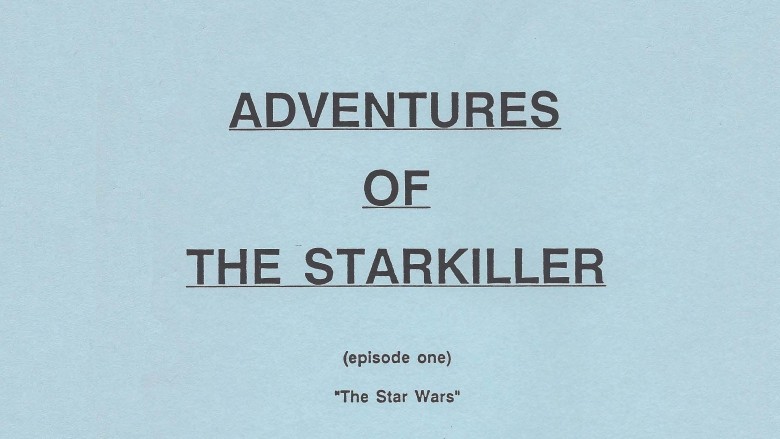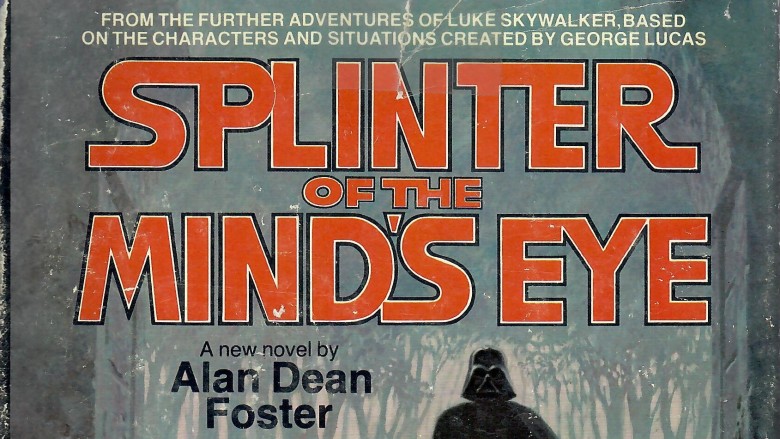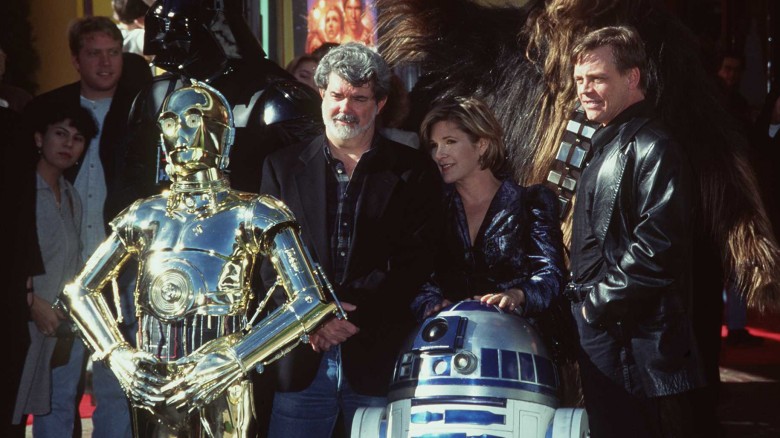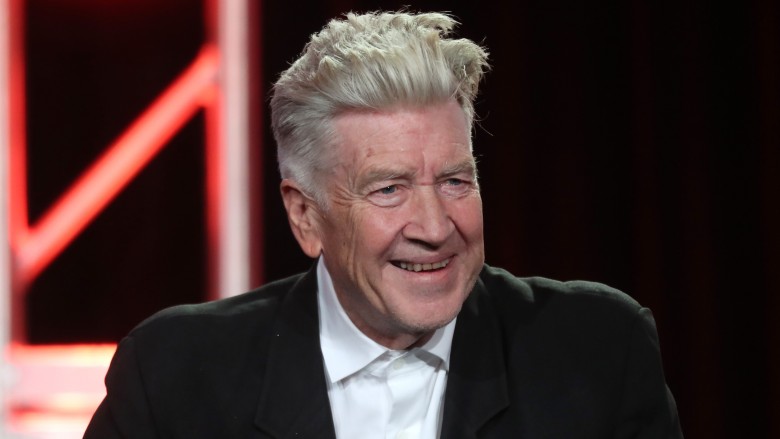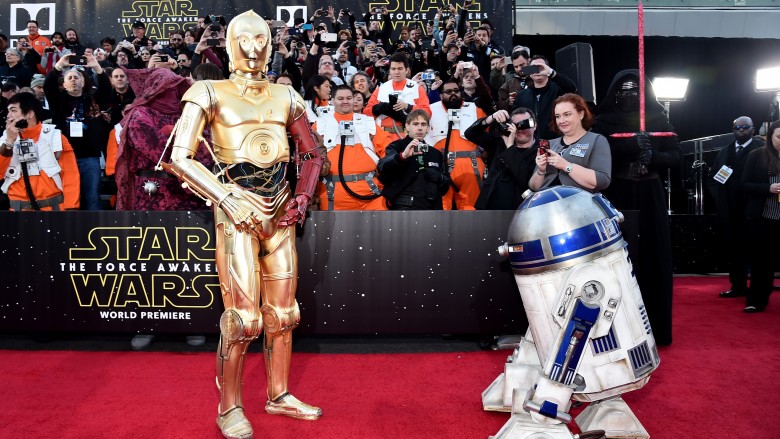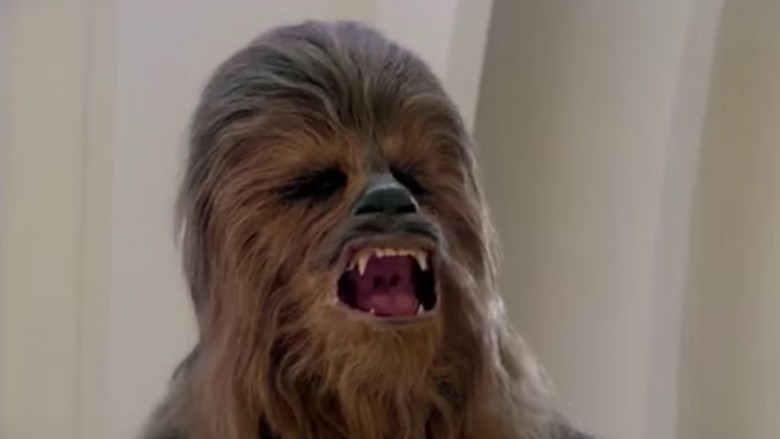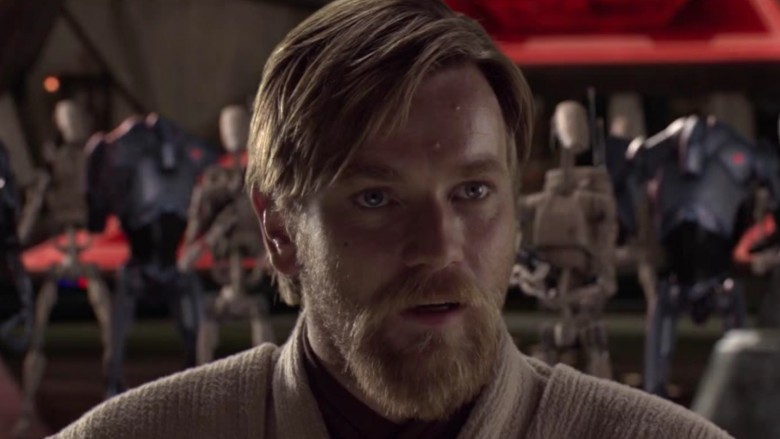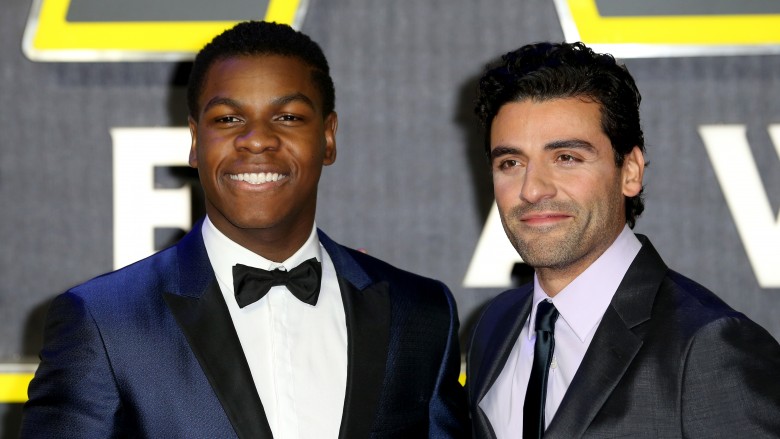Star Wars Movies That Almost Happened
Despite being a very big and beloved part of the pop cultural landscape for more than 40 years, there have only ever been eight Star Wars movies. (Well, nine if you count that Clone Wars animated one.) That's a very long time, and during the many years between the original and prequel trilogies—and the current slew of sequels and standalone offshoots—many other potential (and potentially great) Star Wars movies were rumored, discussed, started...and then disappeared. Here's a look at some of the Star Wars movies that never got made.
Draft One: A Star Wars Story
By 1975, American Graffiti writer-director George Lucas had written a workable draft of a space-set sci-fi epic. It was called Adventures of the Starkiller, Episode One: The Star Wars. A dense script that plays more like a hardcore, super-long science fiction novel than a boisterous space opera, this script became the basis for A New Hope. But it's very different. For example, Luke Starkiller (not Skywalker) is in training to be a Jedi right away, studying under his Jedi uncle Owen. Also studying are his brother and sister and his cousin, Leia. Oh, and the Force is called "the Force of Others" and Chewbacca is gray, resembles a bush baby, has giant fangs, and wears shorts.
Splinter of the Mind's Eye
In retrospect, it's hard to believe that the original Star Wars film, A New Hope, would be anything but a roaring success—it's got adventure, laser swords, robots, spaceships, mysticism, and Carrie Fisher, after all. And yet when it was first released, sci-fi movies were in a bit of a slump, and neither 20th Century Fox nor George Lucas were sure how A New Hope would play to audiences. Lucas always wanted to do a sequel (at the very least), and so he had a contingency plan: if Star Wars was successful, he had a script for The Empire Strikes Back ready to go—as vast and epic as the first Star Wars. If it flopped or was a more modest success, however, Lucas had Splinter of the Mind's Eye at the ready.
A far less grand story, the plot finds Luke and Leia wandering around a swamp planet, trying to find a talisman that makes the Force more effective. At the end, Darth Vader shows up for a lightsaber battle; Han Solo doesn't show up at all. A screen adaptation of the story would be so low-budget, Lucas figured, that the studio would probably let him make it, even if Star Wars was a bomb. Bonus: If Star Wars worked and Empire got made, then Splinter of the Mind's Eye could easily be turned into a Star Wars novel—he'd even gotten Star Wars novelization author Alan Dean Foster to write it. And that's exactly what happened.
Episodes VII, VIII, and IX (as made by George Lucas)
Lucas may have had a plan in case A New Hope didn't widely resonate, but he didn't really think it would fail. That's because Mark Hamill (Like Skywalker himself) says that while shooting the movie in 1976, Lucas revealed to him his plans for a sprawling, 12-part series of movies, and that A New Hope wasn't the first movie (or "episode") but the fourth. Hamill asked why he was starting with the middle movies, to which Lucas replied, "It's the most commercial section of the movie." Lucas then asked Hamill if he'd like to be in "Episode IX," which he said would start filming in 2011. Realizing he'd be much older at that point, Hamill balked, but Lucas told him it would amount to "a cameo. You'll be like Obi-Wan handing the lightsaber down to the next new hope."
Revenge of the Jedi
After having helmed Star Wars himself, George Lucas farmed out the day-to-day directorial duties on The Empire Strikes Back and Return of the Jedi is Irving Kirshner and Richard Marquand, respectively. But before he hired those relatively low-profile gigging directors, he met with filmmakers known for having a very personal, singular style. Picture it: the third Star Wars movie directed by a young David Cronenberg, auteur of unsettling classics like Scanners, Videodrome, The Fly, and Dead Ringers. Cronenberg said he was asked to direct—when the film still had the working title of Revenge of the Jedi—by a producer via a call to his home. "It was one of the producers. He said, 'What would you think of doing Star Wars?' I said, 'Well, I don't usually do other people's material.' And then there was a kind of click."
Lucas also approached another unlikely candidate: Eraserhead director David Lynch. Lynch had his agent emphatically turn down the movie after being turned off by concept art of furry creatures and spending an afternoon going to a salad restaurant with Lucas and being driven around in his Ferrari. Lucas had a lot of ultimately scrapped ideas about how Revenge of the Jedi should go down, including making the Ewoks monstrous lizard creatures instead of cute and cuddly.
An R2-D2 and C3-PO standalone movie
When he was writing the movies that would become The Empire Strikes Back and Return of the Jedi, Lucas came up with an idea for a Star Wars offshoot movie—approximately 35 years before "cinematic universes" or spinoff movies like Rogue One were something Hollywood had even thought of. "I came up with some ideas for a film about robots," he told Prevue, "with no humans in it." While details are scant (with Lucas not mentioning an all-robots, all-the-time movie much after 1981), one can assume that his idea was for a movie about R2-D2 and C3-PO stumbling into wacky adventures across the universe. It never got made, although there was a Saturday morning Star Wars cartoon that ran on ABC during the 1985-86 season called Droids which had a very similar concept.
The Wookiee Movie
In the same interview in which he discusses a plan for a droids movie, Lucas also says that he came up with an idea solely about Wookiees, the race of furry warriors of whom Chewbacca is the most notable example. When he was done writing outlines, Lucas realized that he had generated way too much material. He decided to stick to a still massive and ambitious nine-part saga: the original (middle) trilogy, some prequels, and some sequels. The standalone movies featuring droids, Wookiees, and who knows what else just didn't "have anything to do with the Star Wars saga" and he dismissed the ideas. (Of course, if you really want to see a Star Wars project that prominently features Wookiees, you can always track down The Star Wars Holiday Special from 1978, a variety show in which Chewbacca's family—wife Malla, son Itchy, and father Lumpy—hang around their house on the planet Kashyyyk.)
Some '80s-era prequels
Upon the release of Return of the Jedi in 1983, Lucas sat down for an interview with Rolling Stone. He discussed his creative process in writing the original trilogy, and how that affected his future plans for Star Wars movies and floated two very concrete possibilities. Basically, Lucas said he cut out two-thirds of the original A New Hope script, mostly backstory about the rise of Darth Vader and young Obi-Wan Kenobi. "All the prequel stories exist," Lucas told Rolling Stone. Those two ideas became a large part of the prequels that Lucas made between 1999 and 2005, but he was already thinking about prequels at the height of Star Wars mania in 1983. Whatever movies that would've been produced in the mid-to-late '80s would likely have been much different than The Phantom Menace, Attack of the Clones, and Revenge of the Sith.
An early version of The Force Awakens
After Disney bought the rights to Star Wars in 2012, it worked to get a new Star Wars movie into production as quickly as possible. The House of Mouse hired screenwriter Michael Arndt, who'd written the scripts for Toy Story 3 and Little Miss Sunshine (for which he won an Oscar), among other things. Arndt walked away from the project in 2013 as J.J. Abrams and Lawrence Kasdan took over. That movie became The Force Awakens, of course, but some of Arndt's original concept remains in the finished product, enough to earn him a co-writing credit. In his version, Han and Leia were minor characters, while new ones—Han and Leia's kids—would have been the focus.

